Few things frustrate indoor plant lovers more than seeing tiny black gnats hovering around their plants. Known as fungus gnats or soil gnats, these small flying pests thrive in the moist soil of houseplants and can quickly turn your peaceful indoor garden into a buzzing nuisance.
While adult gnats are mostly harmless, their larvae feed on organic matter—and sometimes delicate plant roots—potentially stunting growth or even killing seedlings. The good news? You don’t need harsh pesticides to eliminate them. With the right natural strategies, you can stop soil gnats without chemicals, keeping your plants healthy and your home pest-free.
This guide covers everything you need to know—from understanding why gnats appear to effective, eco-friendly methods to banish them for good.
1. Understanding Soil Gnats and Why They Appear
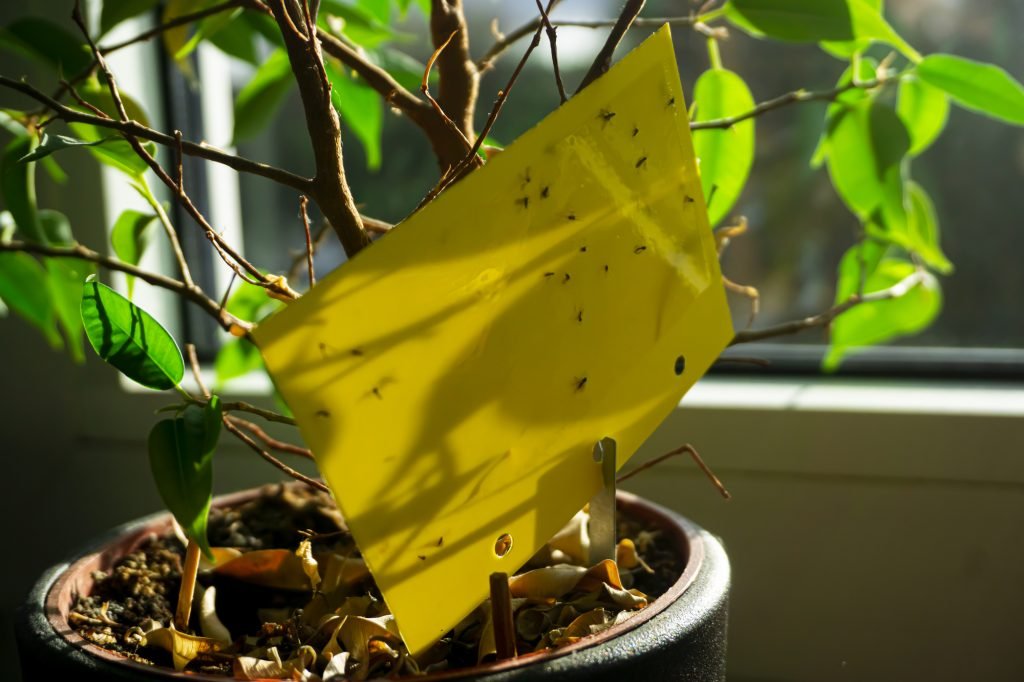
Before tackling the problem, it helps to understand your enemy. Soil gnats (fungus gnats) belong to the Sciaridae family. They’re small, mosquito-like insects that lay eggs in damp, nutrient-rich soil. Once hatched, their larvae feed on organic matter, fungi, and occasionally young plant roots.
Why They Appear:
- Overwatering: Constantly damp soil is the ideal breeding ground for gnats.
- Poor drainage: Stagnant water in saucers or heavy potting soil retains moisture, encouraging larvae growth.
- Organic-rich potting mixes: Soils rich in compost or peat provide ample food for larvae.
- Lack of air circulation: Still air increases humidity, helping gnats thrive.
Understanding these causes allows you to address the root of the issue rather than just the symptoms.
2. Dry Out the Soil — The First and Easiest Fix
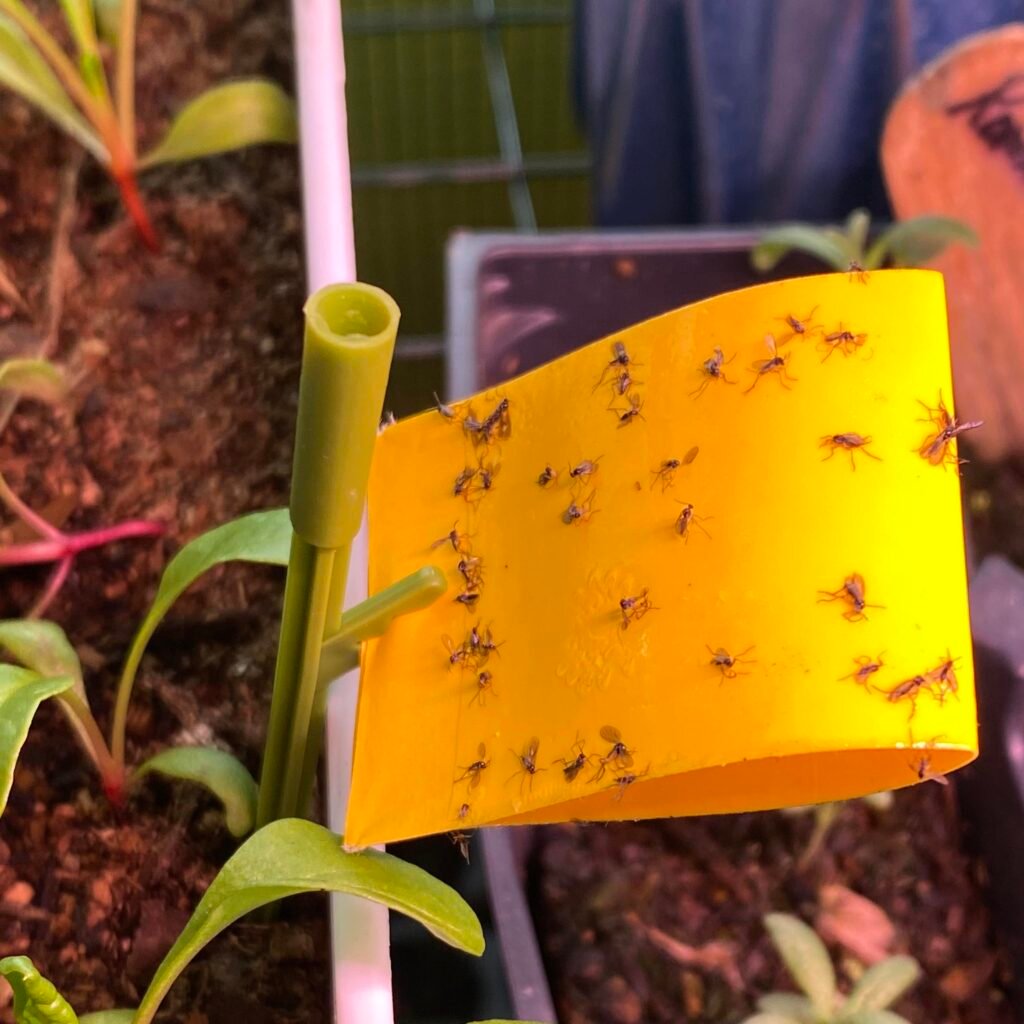
The simplest and most effective non-chemical strategy is to let the top layer of soil dry out completely between waterings. Gnat larvae cannot survive in dry conditions because they need moisture to develop.
Steps to Implement:
- Allow at least 1–2 inches of the topsoil to dry before watering again.
- For large pots, use a moisture meter or your finger to check soil dryness.
- Avoid leaving water in trays or saucers beneath pots.
You can even spread a thin layer of sand or fine gravel on the soil surface to speed up drying and create a barrier that deters adult gnats from laying eggs.
Why It Works:
The gnat life cycle—from egg to adult—takes around 3–4 weeks. By depriving larvae of moisture, you interrupt this cycle naturally, reducing populations within days.
3. Use Sticky Traps to Catch Adult Gnats
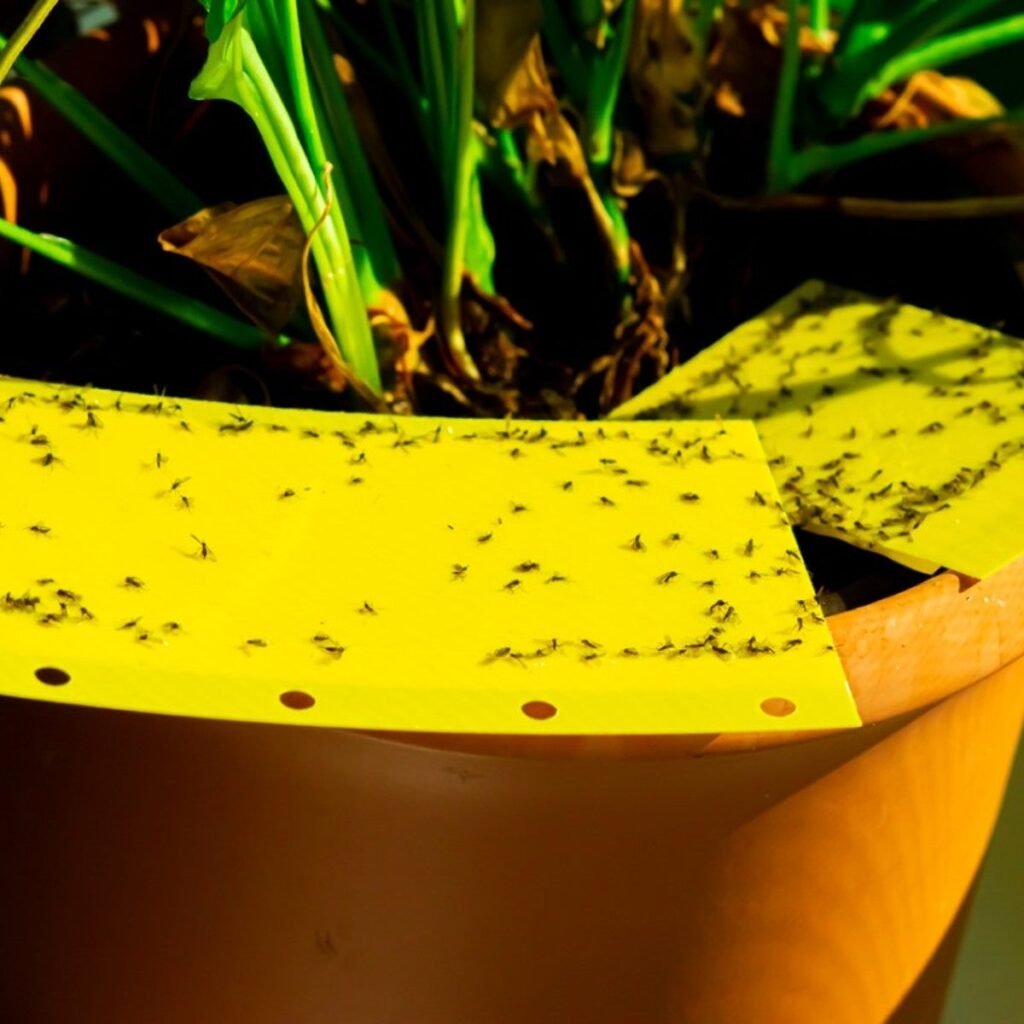
Adult gnats live for about a week, but during that time, each can lay up to 200 eggs. Capturing adults before they reproduce drastically reduces future infestations.
How to Use Sticky Traps:
- Purchase yellow sticky traps (available at garden stores or online).
- Cut them into smaller pieces and insert them into the soil near plant bases.
- Replace traps every 5–7 days or once they’re covered in gnats.
DIY Option:
You can make homemade sticky traps using:
- Yellow index cards or cardboard.
- A light coating of petroleum jelly or honey as adhesive.
The yellow color attracts gnats, while the sticky surface traps them instantly.
Sticky traps are safe, non-toxic, and effective for monitoring infestation levels over time.
4. Try Natural Soil Covers and Barriers
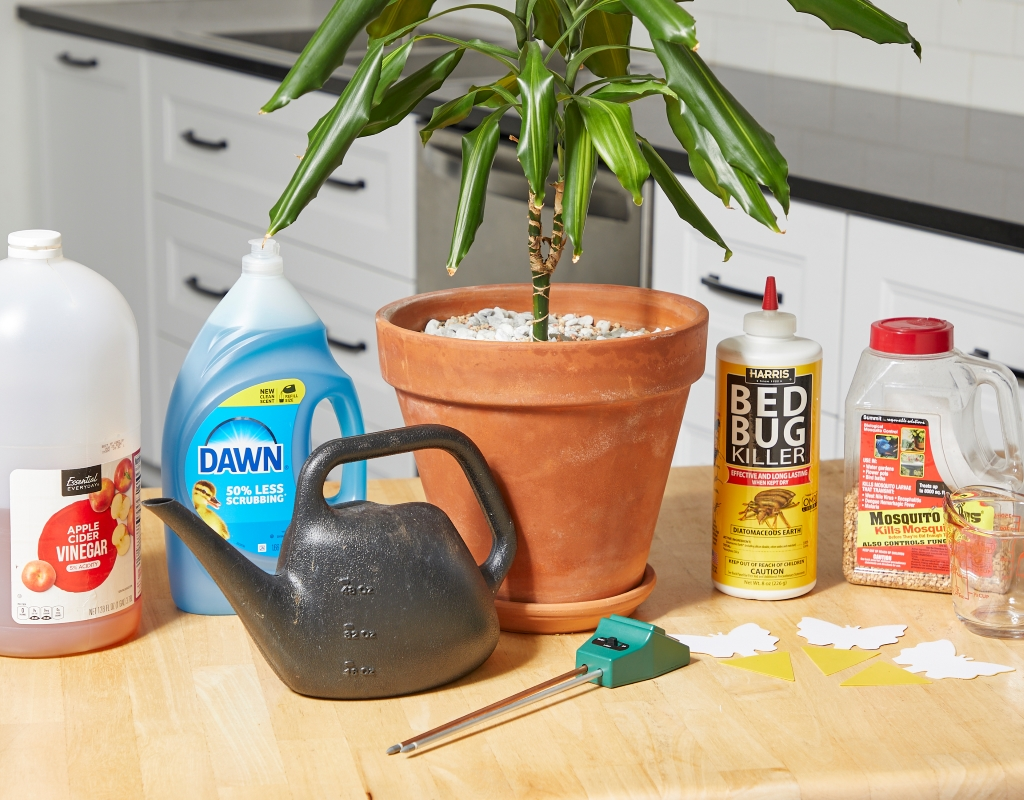
Covering the soil surface with a natural barrier helps prevent adult gnats from laying eggs and deters larvae from emerging.
Best Natural Soil Covers:
- Sand: Dries quickly and blocks larvae access to oxygen.
- Gravel or pebbles: Improves drainage and prevents fungus buildup.
- Cinnamon powder: Has natural antifungal properties that discourage larvae.
- Diatomaceous earth (food-grade): A fine, fossilized powder that damages insect exoskeletons on contact, killing larvae and adults naturally.
Simply spread a thin layer (½ inch) of your chosen barrier over the soil surface after watering. Replace it periodically for continued protection.
5. Water with Natural Solutions That Kill Larvae
You can destroy larvae living in the soil using safe, natural liquids that don’t harm plants.
a) Hydrogen Peroxide Solution
A diluted hydrogen peroxide solution is a time-tested gnat remedy.
How to Use:
- Mix 1 part 3% hydrogen peroxide with 4 parts water.
- Pour the solution gently into the soil until it starts draining out the bottom.
- The mild fizzing action kills larvae and oxygenates the roots.
Use this treatment once every two weeks until gnats disappear.
b) Neem Oil Solution
Neem oil is a natural pesticide that disrupts the life cycle of gnats without harming plants or beneficial microbes.
How to Use:
- Mix 1 teaspoon neem oil, a few drops of mild soap, and 1 liter of warm water.
- Water the soil with this mixture once every 7–10 days.
Neem oil remains active in soil for several days, killing larvae and deterring adult gnats from laying eggs.
c) Cinnamon Water
Cinnamon has natural antifungal and antibacterial properties that make soil less appealing to fungus gnats.
How to Use:
- Boil 1 tablespoon of cinnamon powder in 1 liter of water.
- Let it cool and strain the mixture.
- Water your plants with it weekly.
This natural infusion kills fungus spores (gnats’ main food source) and disrupts the larvae’s habitat.
6. Introduce Natural Predators
If you have a large infestation, consider introducing beneficial predatory insects that feed on gnat larvae. These biological controls are safe for indoor use and don’t rely on chemicals.
Effective Predators:
- Beneficial nematodes (Steinernema feltiae): Microscopic worms that attack gnat larvae in soil. You can mix them with water and apply directly to the soil.
- Hypoaspis miles (predatory mites): Tiny mites that live in the top layer of soil, feeding on larvae and eggs.
Both options are environmentally friendly and safe for children, pets, and plants. They target gnats at the source and help maintain a long-term balance in your indoor garden ecosystem.
7. Improve Air Circulation and Reduce Humidity
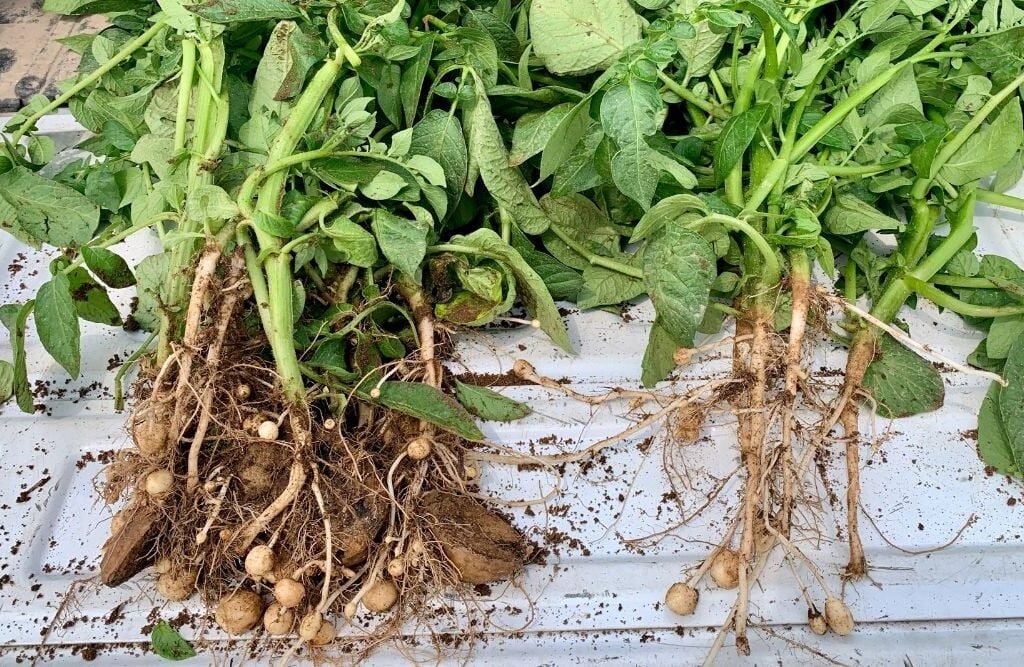
Gnats love still, humid environments. Improving air movement not only makes your space less inviting to pests but also helps soil dry faster.
Tips for Better Airflow:
- Use a small fan near your plants to keep air circulating.
- Open windows periodically to let fresh air in.
- Avoid overcrowding plants—space them out to allow airflow between pots.
- If humidity is high, consider using a dehumidifier in your plant area.
These adjustments make it difficult for gnats to thrive and reproduce, reducing their numbers naturally over time.
8. Repot Severely Infested Plants
If all else fails, and the soil seems overrun with larvae, repotting your plant is the most effective long-term solution.
How to Repot Safely:
- Remove the plant carefully from its current pot.
- Shake off excess soil and rinse the roots gently with lukewarm water.
- Discard the old soil—do not reuse it.
- Clean the pot thoroughly with soap and water (or use a new one).
- Repot with fresh, sterile, well-draining potting mix.
Avoid overwatering afterward to prevent re-infestation. For added protection, mix a little diatomaceous earth or perlite into the new soil to discourage gnats from returning.
9. Prevent Future Infestations
Once you’ve eradicated soil gnats, prevention becomes the key to long-term success.
Best Preventive Practices:
- Monitor watering habits: Always check soil moisture before watering.
- Use sterile potting mixes: Avoid garden soil, which may contain gnat eggs.
- Inspect new plants: Quarantine new additions for a week before placing them near existing ones.
- Clean regularly: Wipe leaves, pots, and shelves to remove decaying debris and mold.
- Add drainage layers: Place gravel or small pebbles at the pot base to prevent waterlogging.
Consistent care habits will make your indoor garden less hospitable to pests while promoting stronger, healthier plants.
Conclusion
You don’t need harsh pesticides to rid your home of soil gnats. By combining drying techniques, natural barriers, sticky traps, and biological controls, you can eliminate these pesky insects safely and sustainably.
The secret lies in maintaining balance—moisture, air, and cleanliness. Each small change contributes to a healthier plant environment where gnats simply can’t survive.
With patience and consistency, your indoor plants will soon be free of gnats, their leaves gleaming with health, and their roots thriving in clean, pest-free soil—all without a single drop of chemical pesticide.
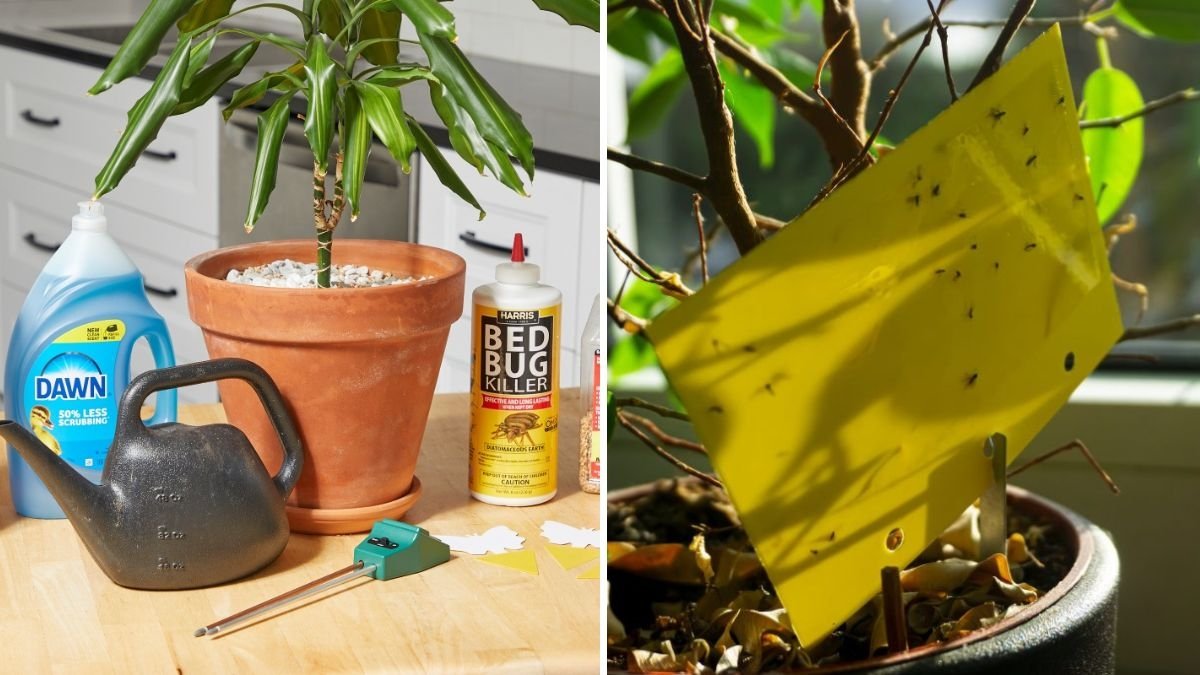




Leave A Comment